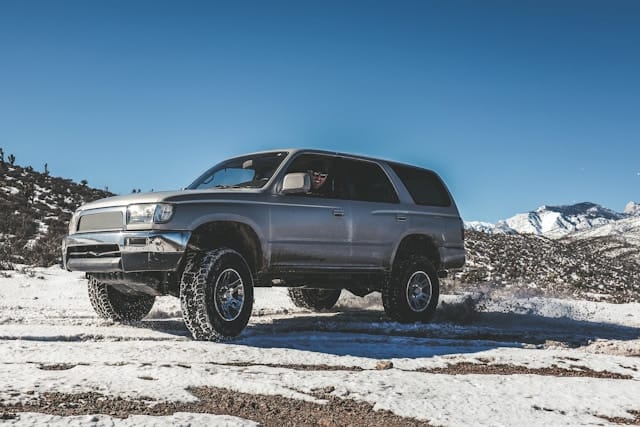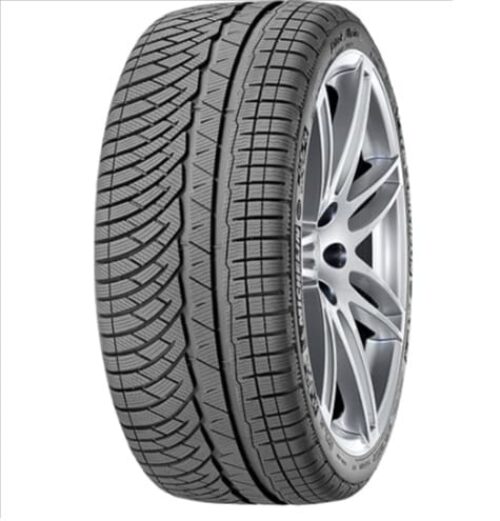
As winter approaches, drivers across the UK face the critical decision of how to equip their vehicles for the cold, slippery roads ahead. The right tyres can mean the difference between a safe journey and a perilous situation. In this blog post, we will explore the importance of winter tyres, their unique features, and whether they are truly worth the investment. We’ll also tackle common questions such as “Are summer tyres ok in UKs winter?”
What Are Winter Tyres?
These tyres are specifically engineered to perform optimally in cold weather conditions. Unlike their summer counterparts, these tyres are designed to remain flexible and provide better traction when temperatures drop below +7°C. The tread compounds used in tyres contain a higher proportion of natural rubber, which allows them to maintain grip in icy and snowy conditions.
The differences extend beyond just the rubber compound. The tread patterns of these tyres feature deeper grooves and unique designs that are crucial for channeling away slush and water, thereby reducing the risk of hydroplaning.
In summary, these are a specialized type of tyre designed for optimal performance in cold, snowy, and icy conditions. Their construction sets them apart from standard tyres, making them an essential component for safe driving.
Why Winter Tyres Are Essential
Winter tyres are not just an accessory; they are essential for safe driving in winter conditions. Statistics show that a significant percentage of winter accidents occur due to poor tyre performance. When temperatures dip below +7°C, the rubber in summer tyres begins to harden, leading to decreased grip.
Research indicates that vehicles equipped with winter tyres can stop up to 30% shorter distances on icy roads compared to those fitted with summer tyres. This enhanced performance is vital for avoiding accidents and maintaining control on treacherous surfaces.
In the UK, where winter weather can vary from mild to severe, having the right tyres is a crucial factor in driving safety. Winter tyres provide the necessary grip to navigate unpredictable conditions, helping drivers to maintain better control of their vehicles.
Key Features of Winter Tyres
Tread Design
The tread design of these tyres is one of their most significant features. These tyres are crafted with aggressive patterns that provide superior traction on snow and ice. The ability of the tread to “bite” into slippery surfaces ensures that drivers can navigate challenging conditions with confidence.
Winter tyres typically have a higher void ratio, meaning there is more space between the tread blocks. This design allows snow to pack into the grooves, which then aids in grip on snow-covered roads. The more pronounced tread patterns help to disperse water and slush effectively, reducing the risk of hydroplaning.
Siping and Grooves
Sipes—small slits in the tyre tread—play a crucial role in enhancing grip. Winter-tyres can have up to 10 times more sipes than summer tyres, increasing the number of biting edges that come into contact with the road. These sipes create additional traction by providing extra edges that grip the road surface, which is particularly important when driving on ice.
Additionally, winter tyres typically feature an increased groove ratio, allowing them to channel snow and water away more effectively. This enhanced drainage capability helps maintain contact with the road, ensuring better stability and safety.
Temperature Flexibility
One of the defining characteristics of winter tyres is their ability to maintain performance in cold temperatures. As the mercury falls, the special rubber compounds used in these tyres remain pliable, ensuring that drivers retain grip and control. This flexibility is essential for navigating icy roads and maintaining safety.
The rubber compound used in these tyres is formulated to withstand low temperatures, meaning that even when conditions are harsh, the tyres can perform effectively. This characteristic makes winter tyres indispensable for those who regularly drive in wintry conditions.
Comparison: Winter vs. Summer Tyres
When comparing winter-tyres to summer one, the differences in performance are striking. These tyres excel in cold, wet, and snowy conditions, offering better handling and shorter braking distances. In contrast, summer tyres are designed for warmer temperatures, where their performance is optimal.
For instance, a driver facing a sudden stop on an icy road would find that these tyres can significantly reduce stopping distances compared to summer tyres. A recent study indicated that vehicles fitted with winter tyres could stop in half the distance of those using summer tyres in snowy conditions.
In a recent survey, drivers reported feeling more secure and confident when using winter tyres, particularly in challenging conditions. The assurance that comes with knowing you have the right tyres for the season cannot be overstated.
Are Summer Tyres OK in UK’s Winter ?
Many drivers in the UK wonder if they can get by with summer tyres during the winter months. The short answer is no; using summer tyres in winter can be dangerous. The hardening of rubber in cold temperatures results in a loss of grip, leading to longer stopping distances and increased risk of skidding.
Drivers have shared stories of near-misses and accidents attributed to the use of summer tyres in winter conditions. The UK’s driving authorities recommend switching to winter tyres as soon as the temperature begins to drop consistently.
Several studies have shown that drivers using summer tyres in winter conditions are significantly more likely to experience accidents. This serves as a stark reminder of the importance of having the right tyres for the season.
Are Winter Tyres Worth It?
Investing in winter tyres may seem costly initially, but the long-term benefits far outweigh the expense. Beyond improved safety, these tyres can lead to savings on insurance premiums and repairs related to winter accidents.
A survey of drivers who switched to winter tyres revealed that many experienced a marked improvement in confidence while driving in snow and ice. Testimonials highlight that the peace of mind offered by these tyres is invaluable, especially for those living in areas prone to harsh weather.
Additionally, winter tyres can enhance your vehicle’s performance, allowing for smoother handling and better braking in adverse conditions. Many drivers report that the investment pays for itself in terms of safety and the prevention of costly accidents.
How to Choose the Right Tyres
Choosing the right tyres involves considering several factors, including size, tread depth, and brand. It is essential to consult your vehicle’s owner manual to ensure compatibility. Additionally, seek professional fitting and maintenance to ensure optimal performance.
Size and Fit
When selecting tyres, it’s crucial to choose the right size for your vehicle. Referencing the manufacturer’s specifications ensures that you’re not only compliant but also that the tyres will perform as intended.
Tread Depth and Brand Recommendations
Tread depth is another critical factor. Ensure that your tyres have sufficient tread depth to provide adequate grip. Consider reputable brands known for their performance in winter conditions. Research customer reviews and expert opinions to help guide your choice.
Professional Fitting and Maintenance
It’s advisable to have your tyres fitted by professionals who can ensure they are mounted correctly and balanced. Regular maintenance checks throughout the winter season can also help identify any wear or issues early on.
Seasonal Storage
Storing tyres correctly during the off-season is also crucial. Keep them in a cool, dry place away from direct sunlight to extend their lifespan. Proper care will ensure that your tyres remain in good condition for the next season.
YOU MAY ALSO LIKE: How to Maintain Car Batteries
Common Misconceptions About these Tyres
Despite their benefits, several misconceptions about these tyres persist. Some drivers believe that these tyres are unnecessary in milder climates. However, even a slight drop in temperature can impact rubber performance.
Another common myth is that these tyres will wear out too quickly if used year-round. In reality, these tyres are designed for specific conditions and will degrade faster in warmer temperatures, which is why they should be swapped out during the warmer months.
It’s essential to educate yourself on these misconceptions to make informed decisions regarding tyre safety and performance.
As you prepare for the winter months, consider your driving habits and the conditions you are likely to face. The investment in winter tyres is not just about compliance; it’s about ensuring the safety of yourself and others on the road.
Michelin Pilot Alpin PA4 EL FSL M+S – 255/35R20 97W – Winter Tire
Seasons Winter







